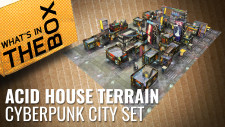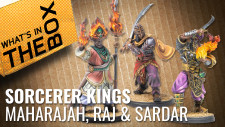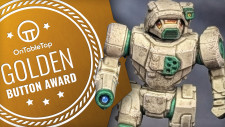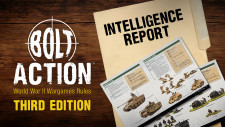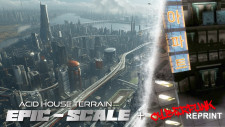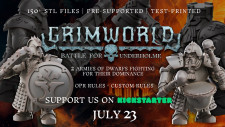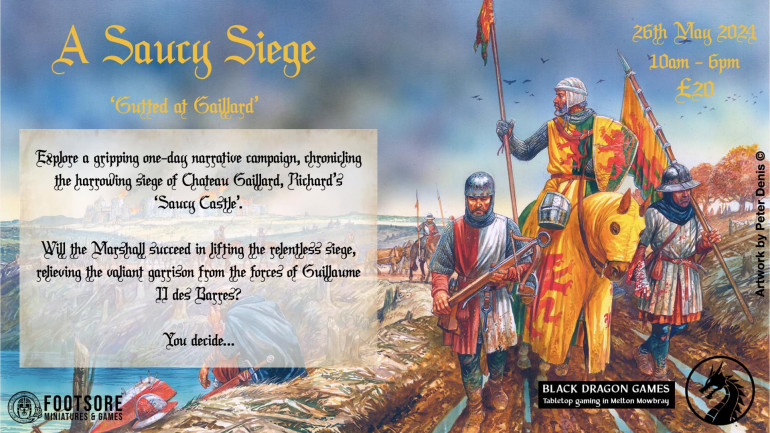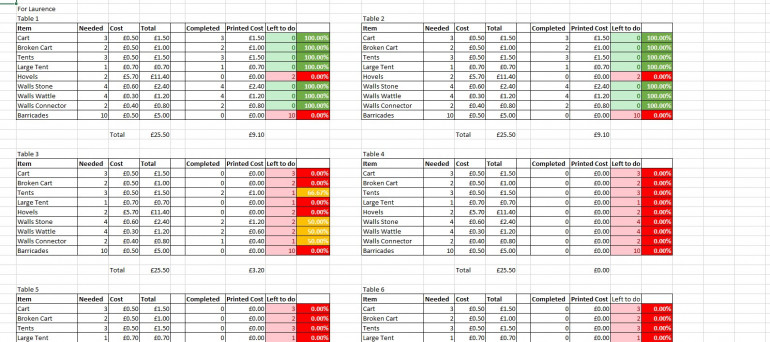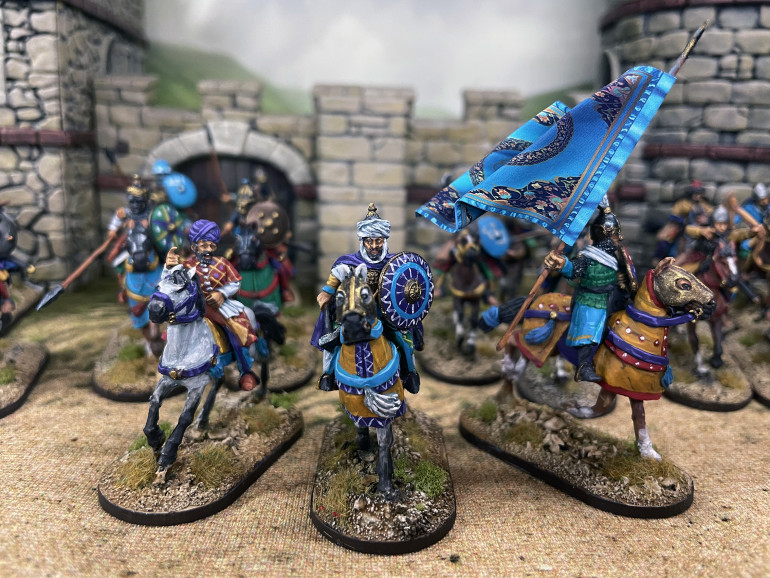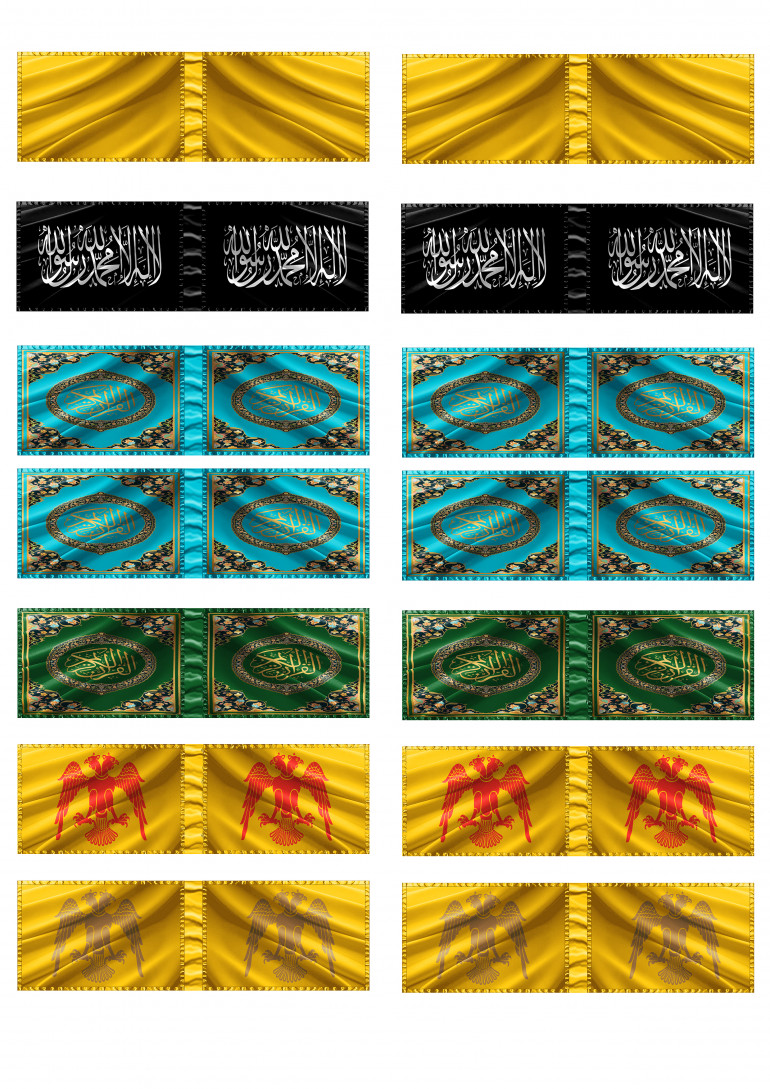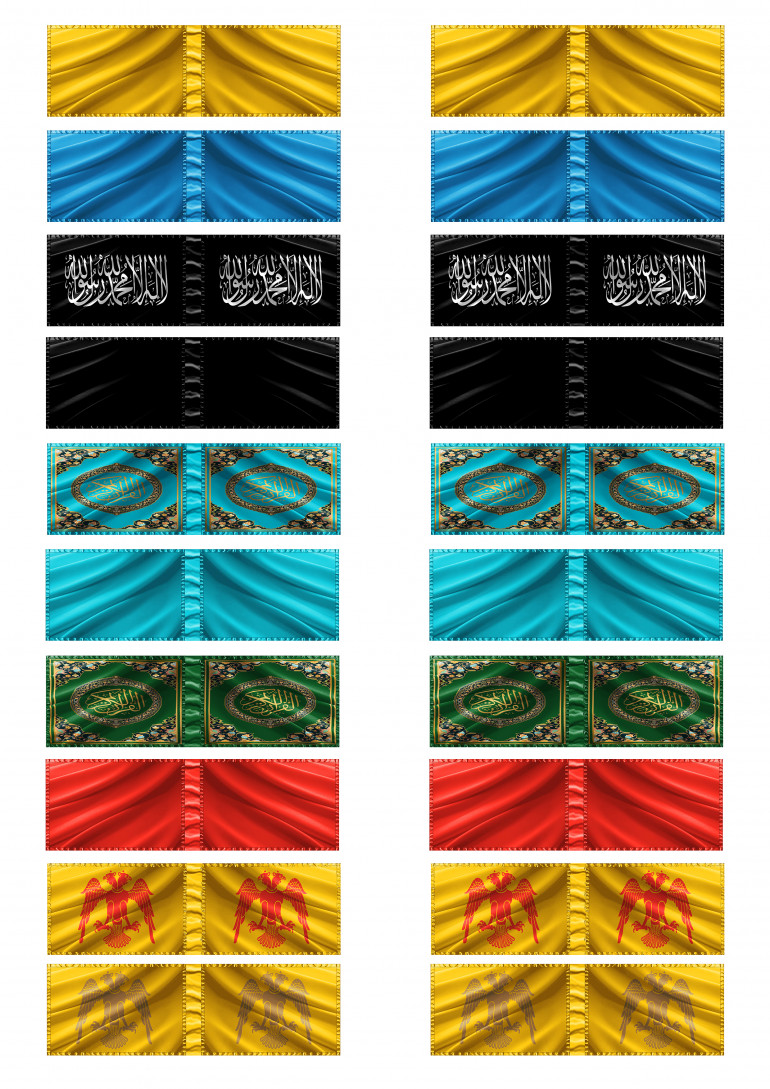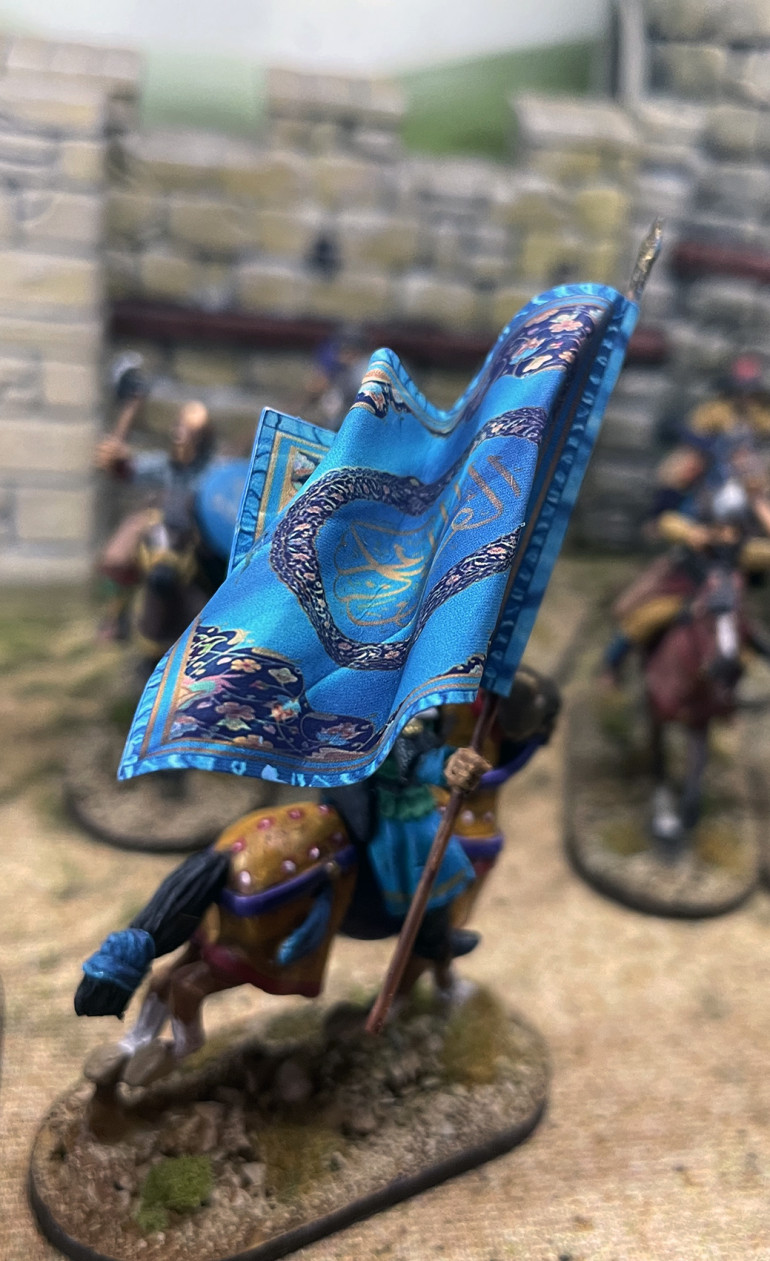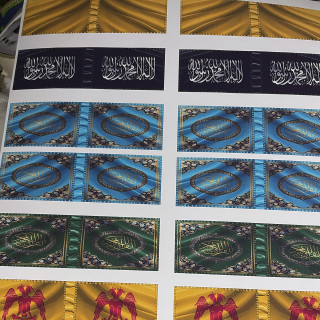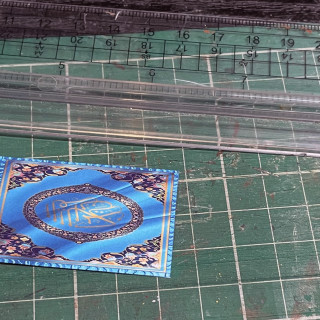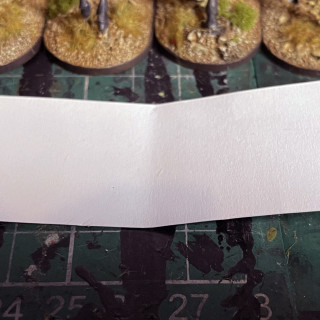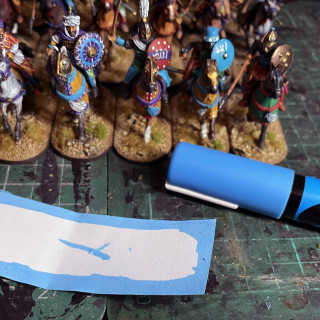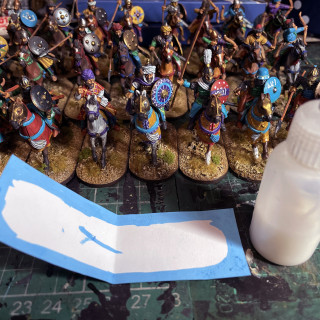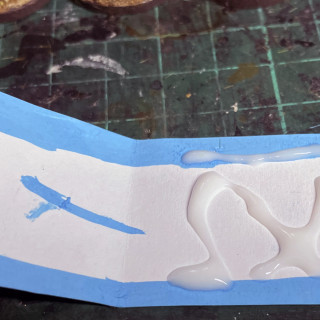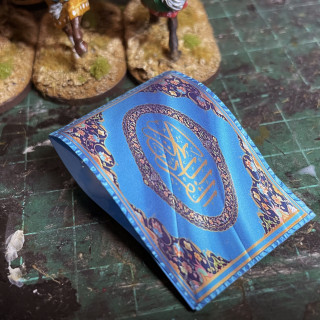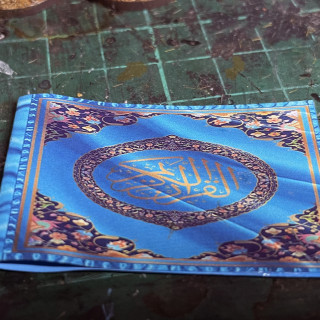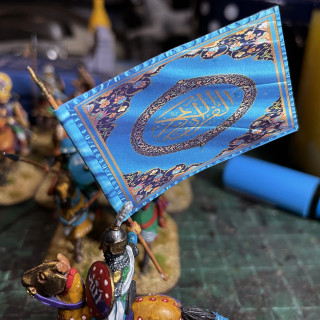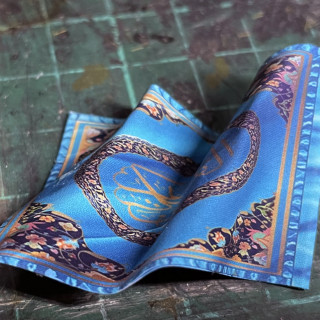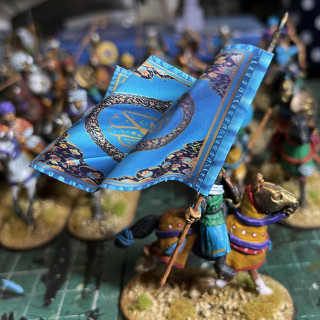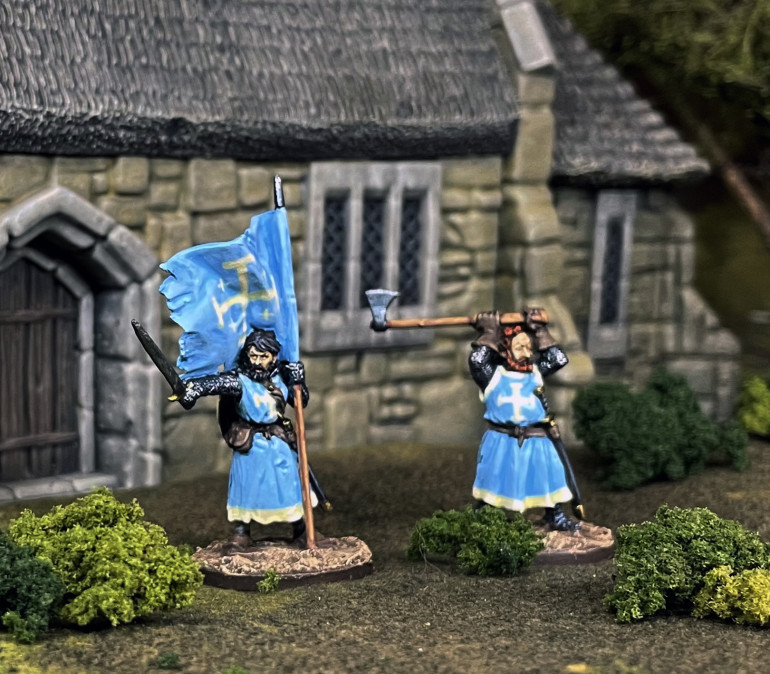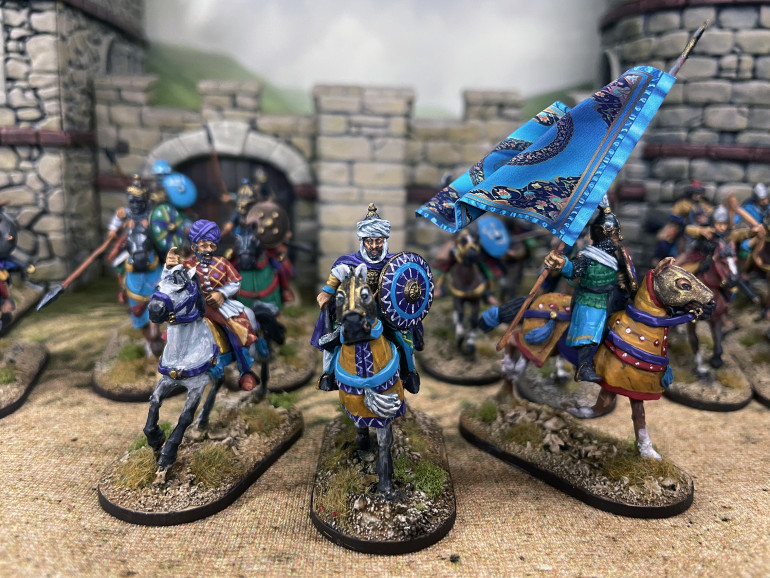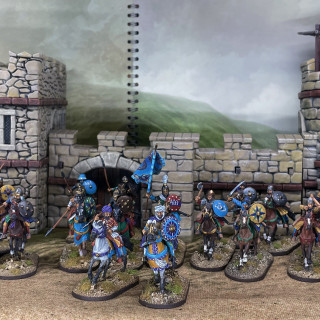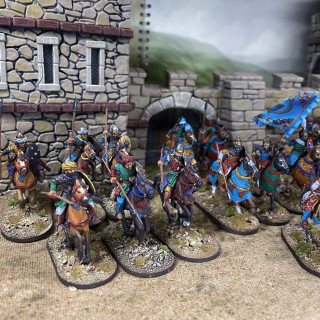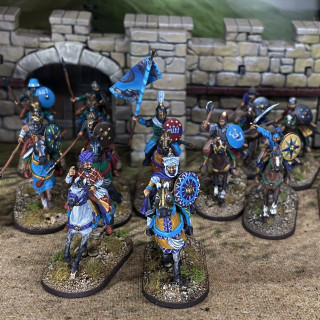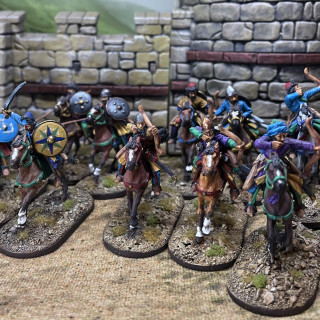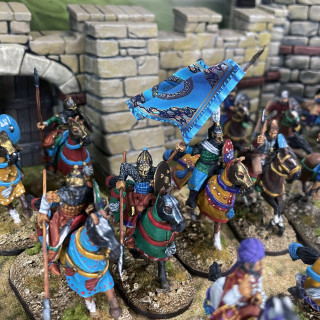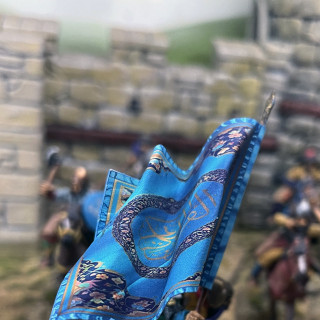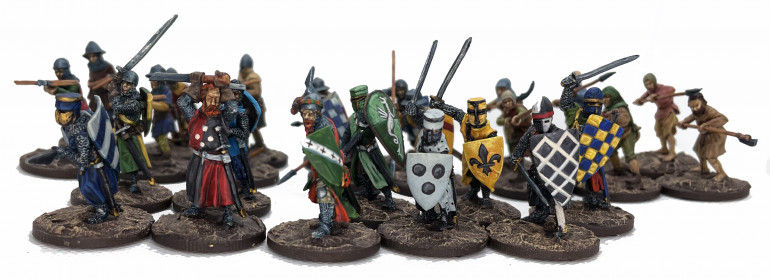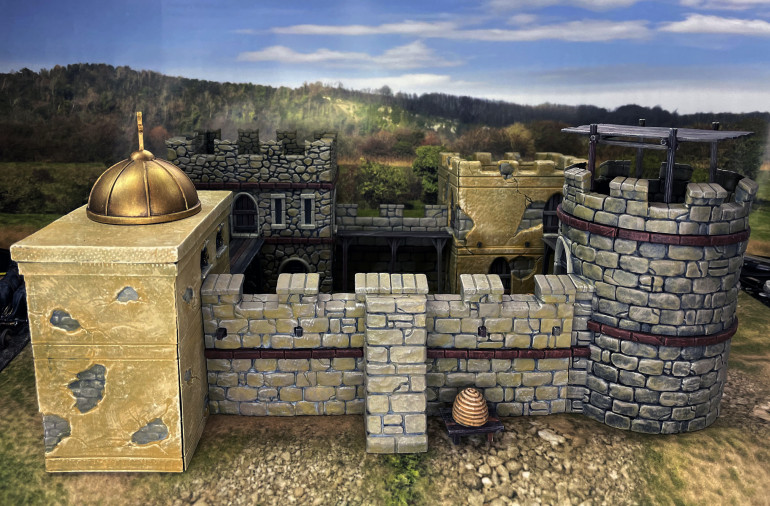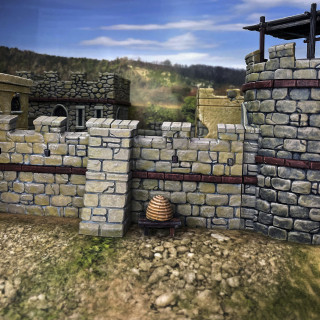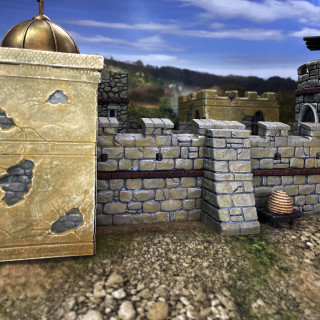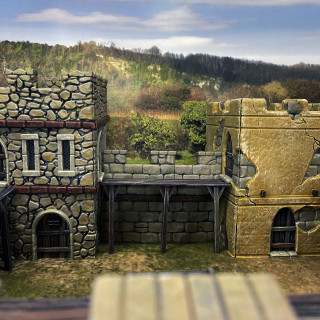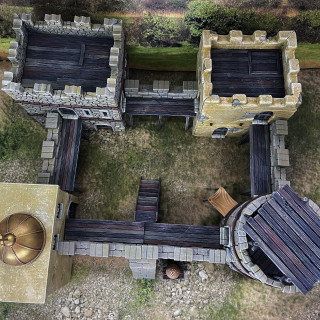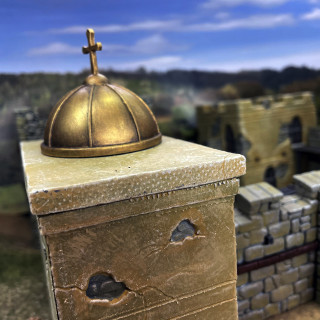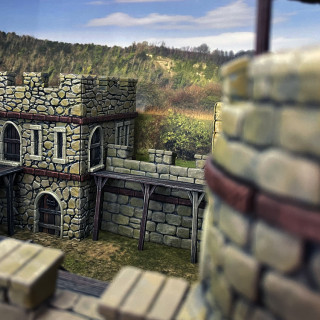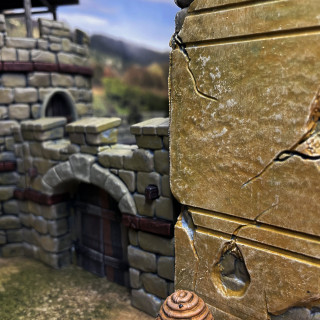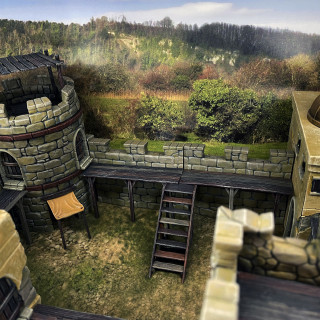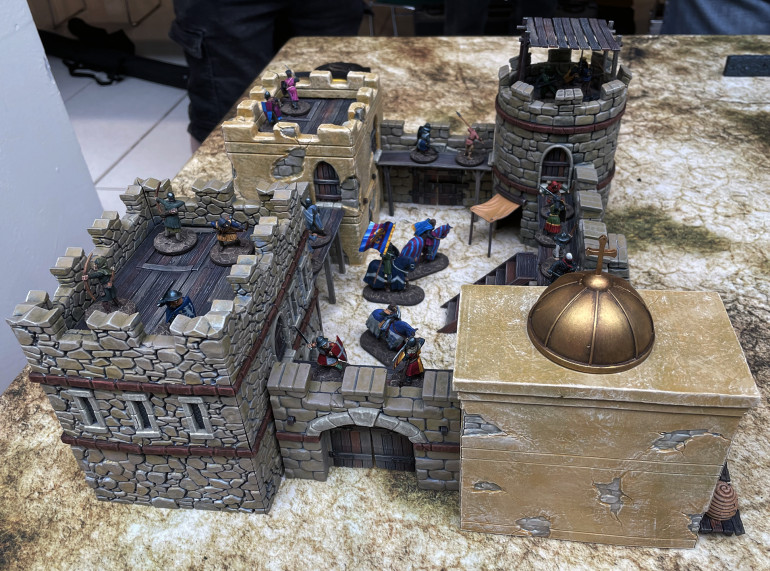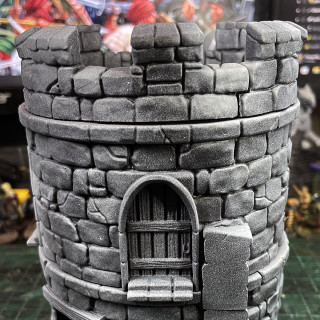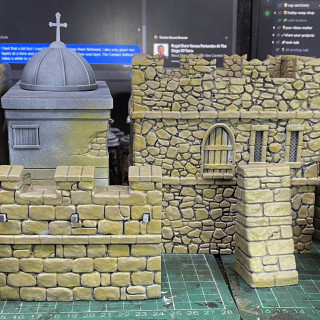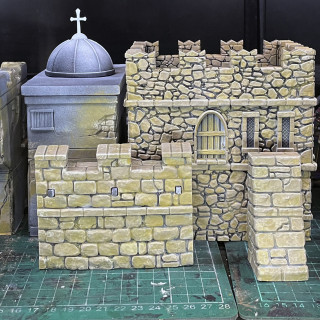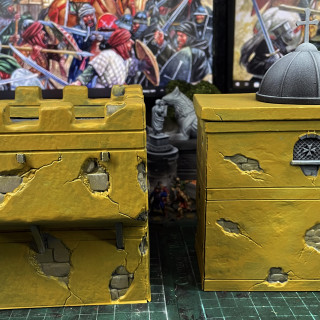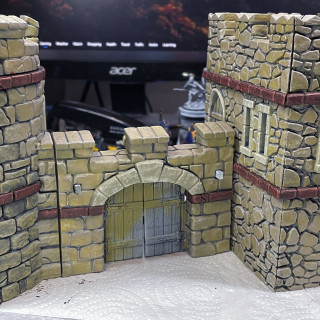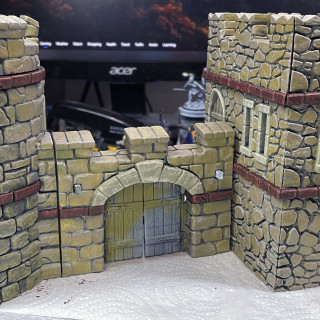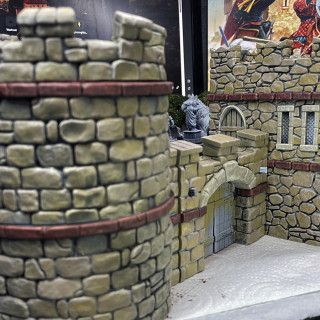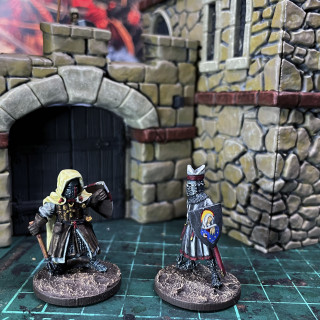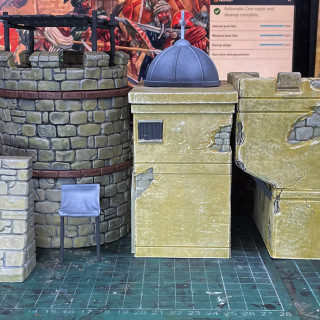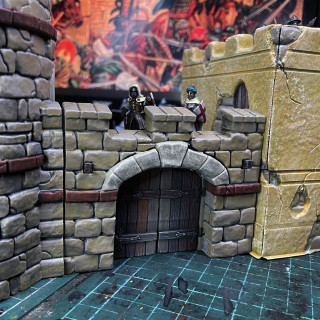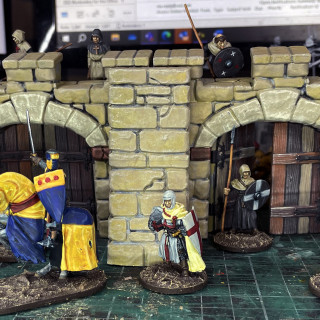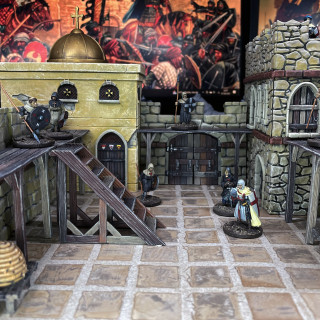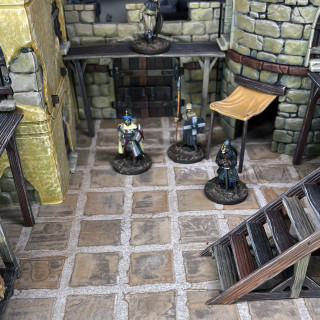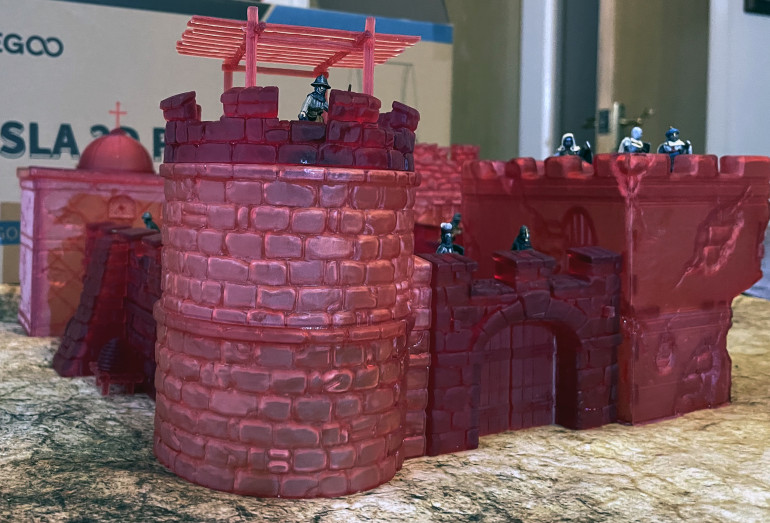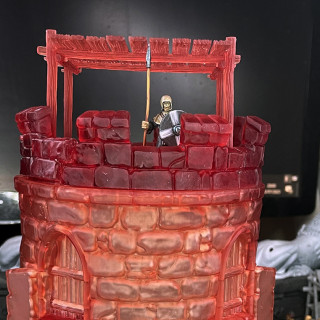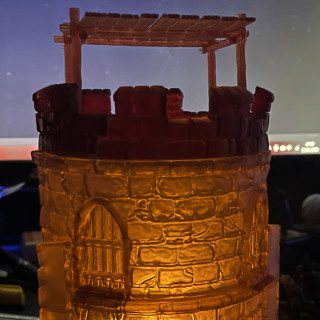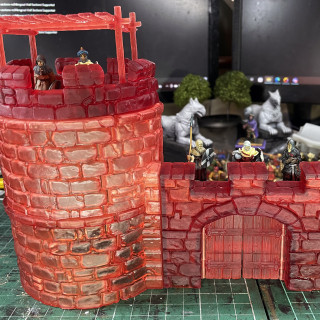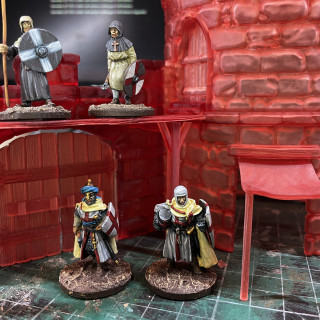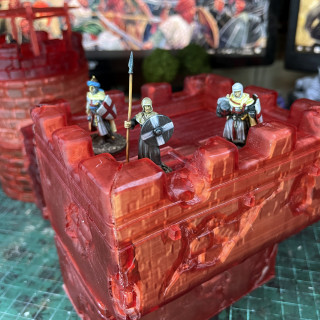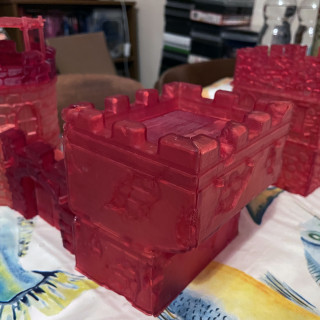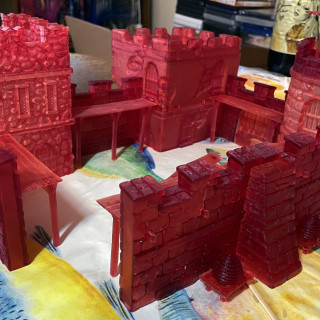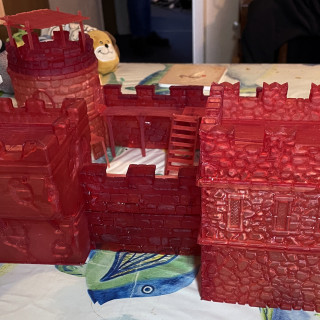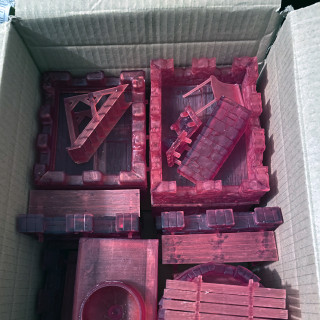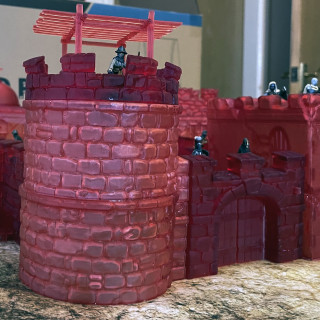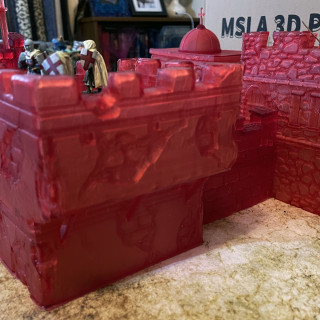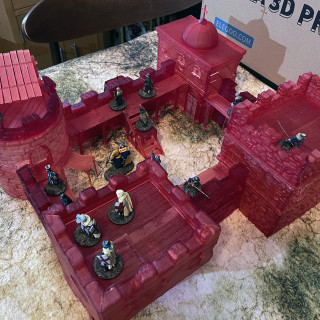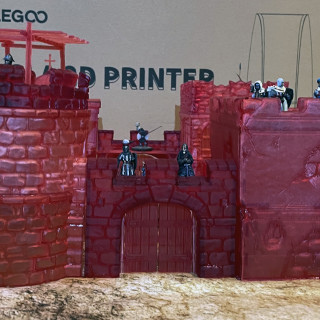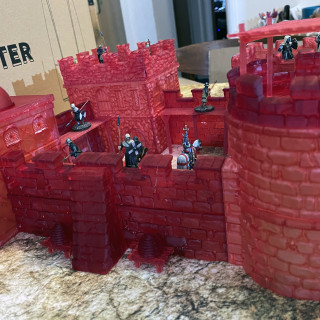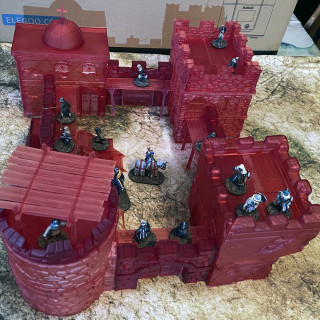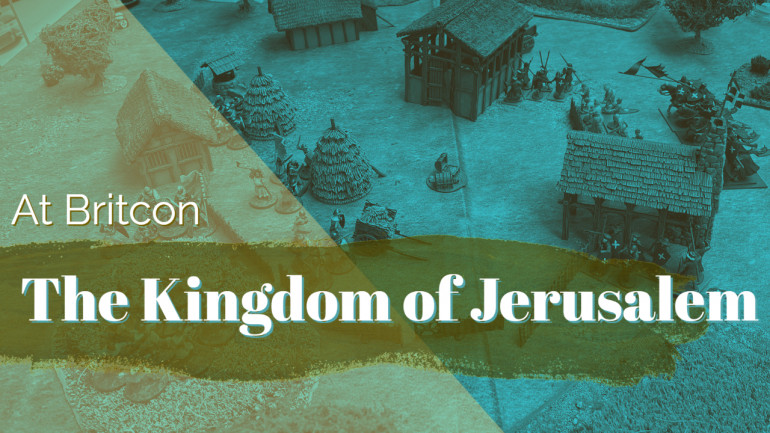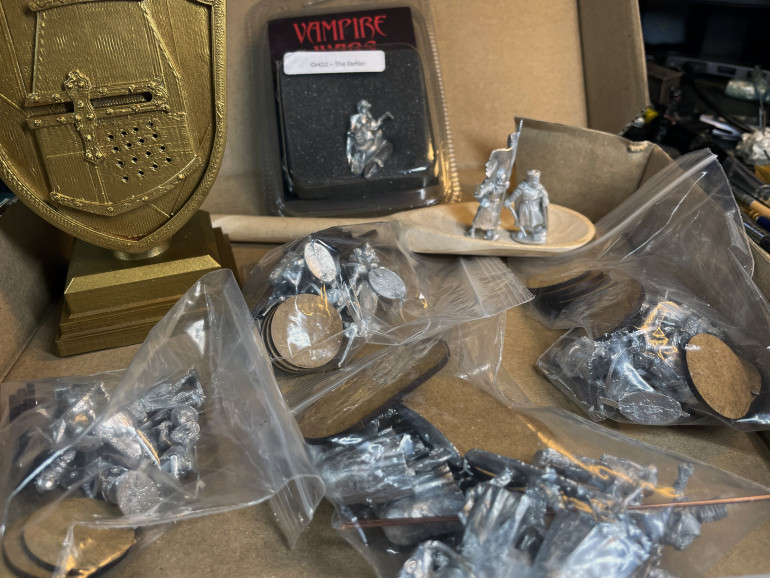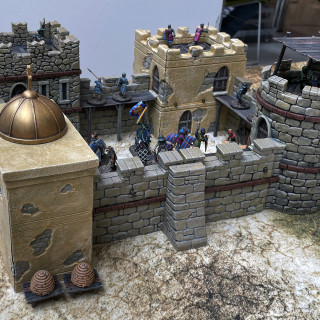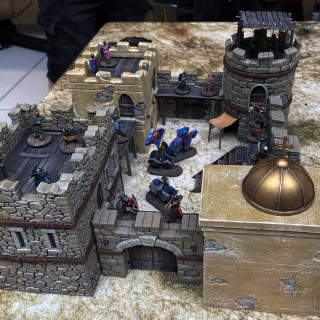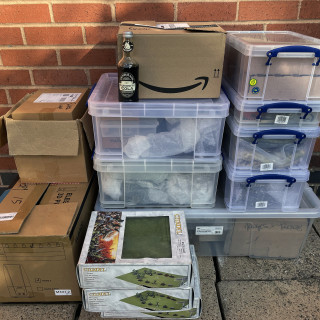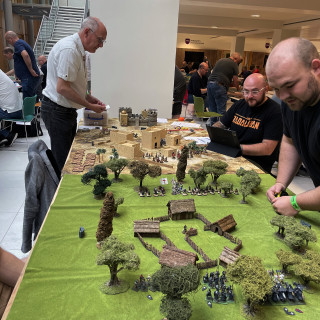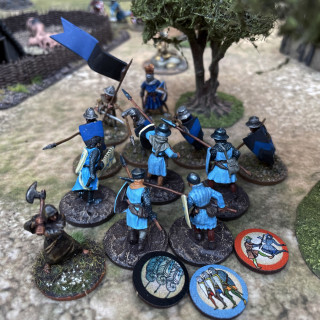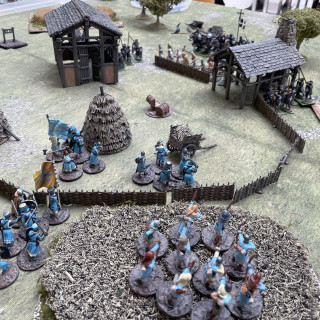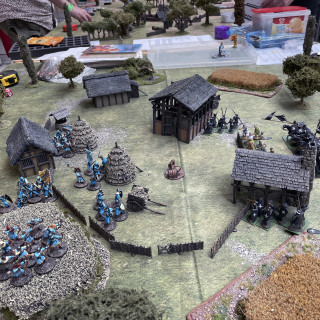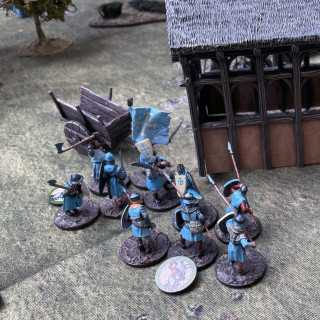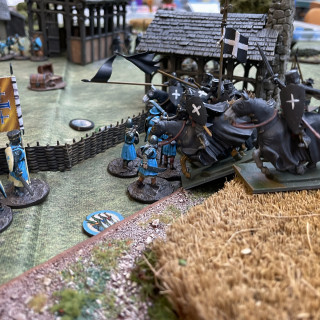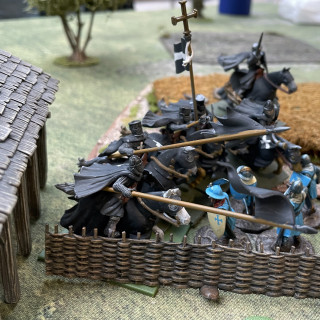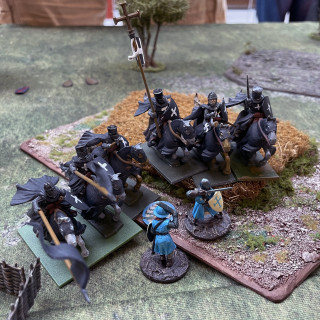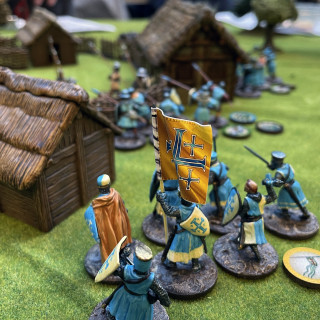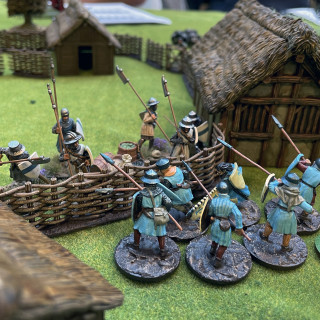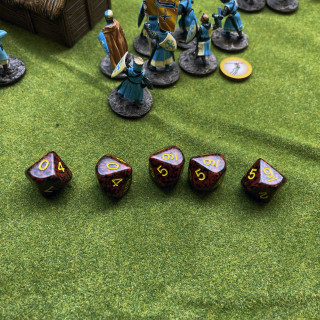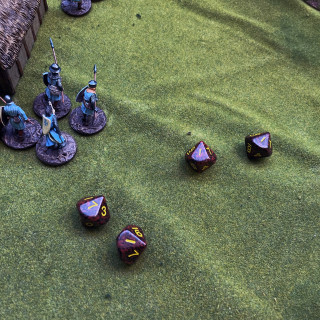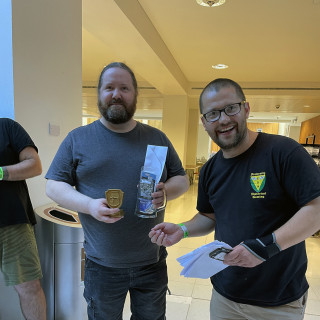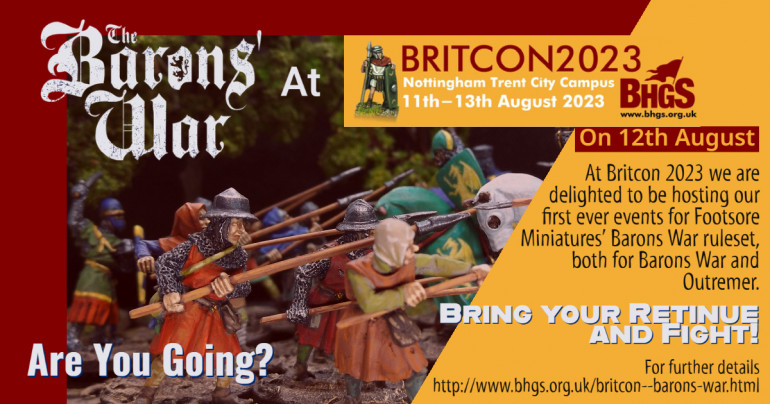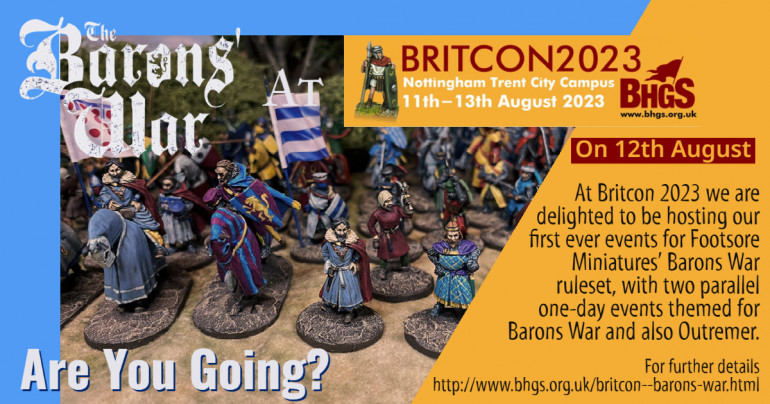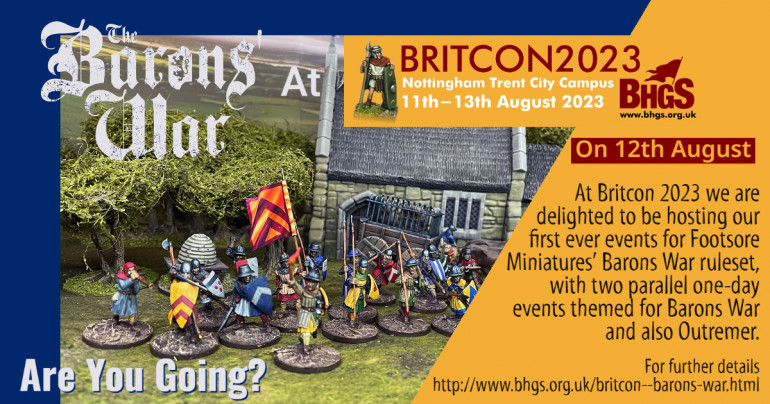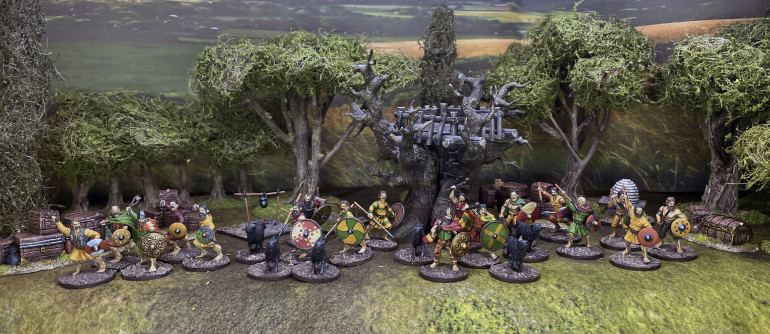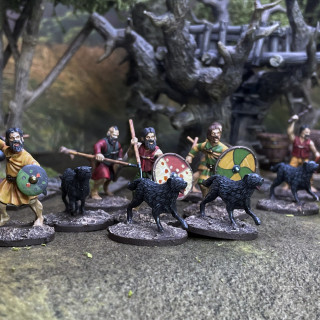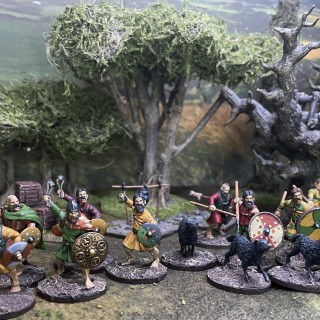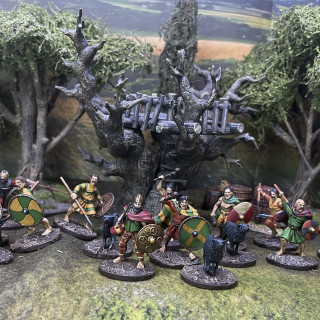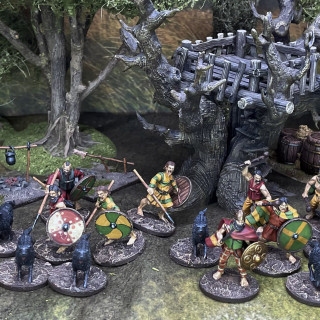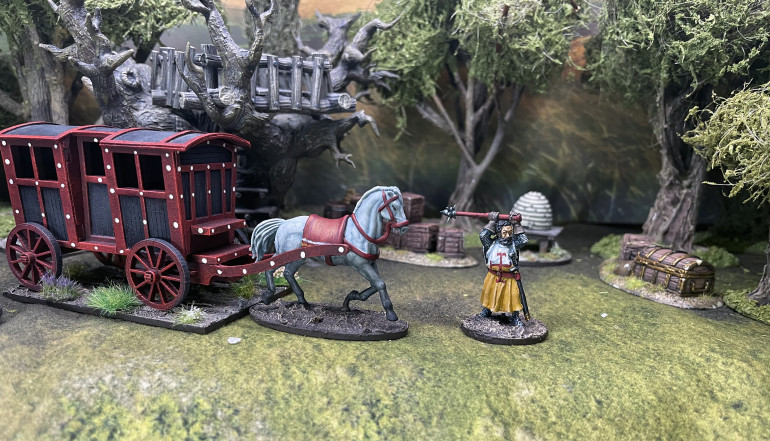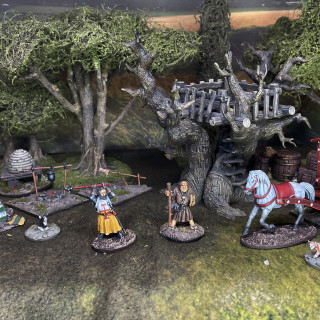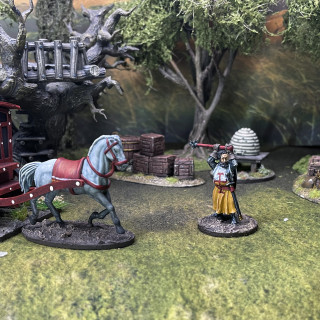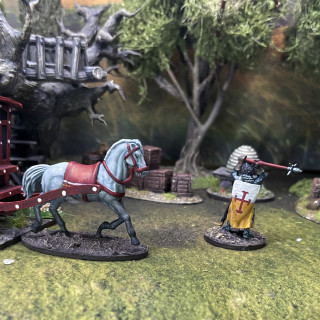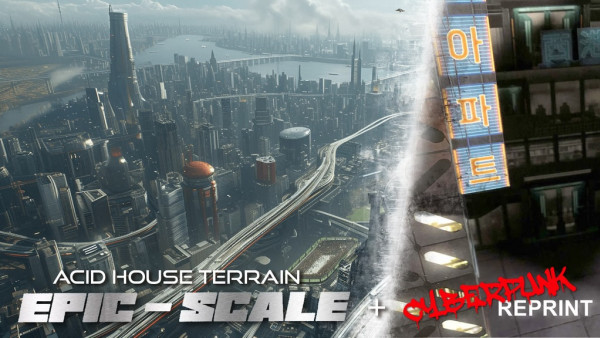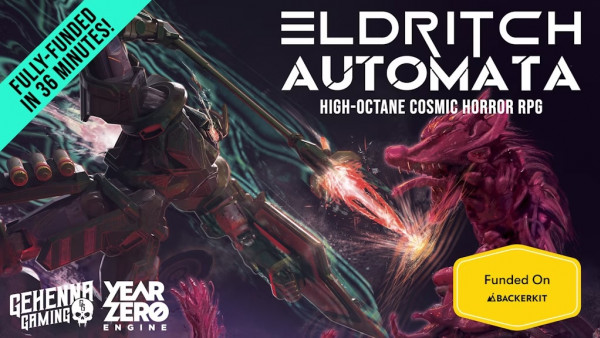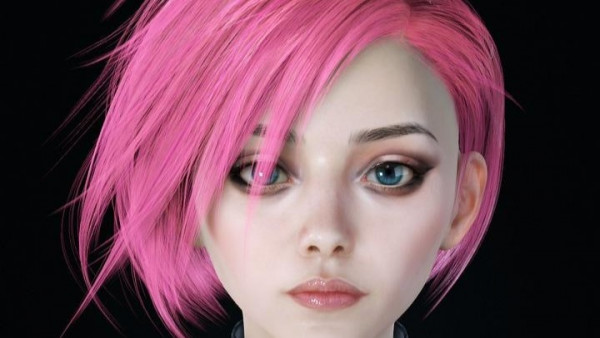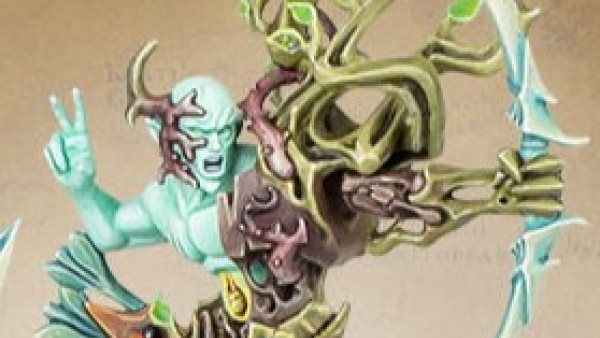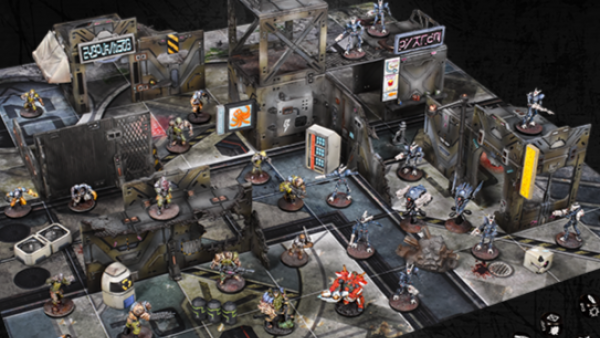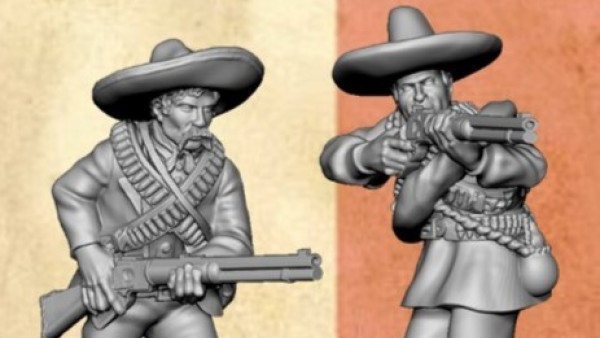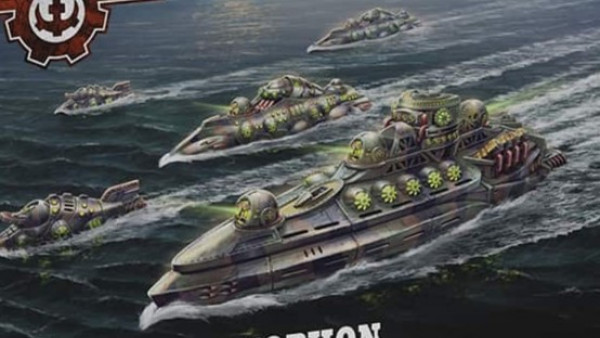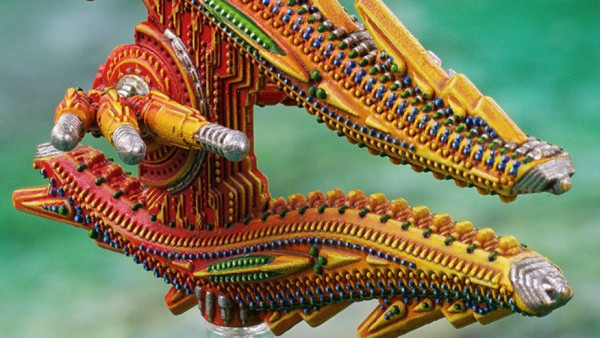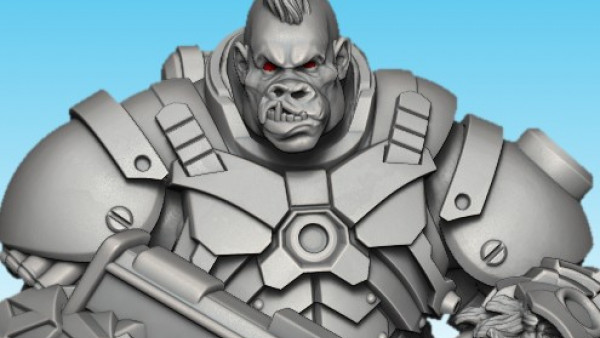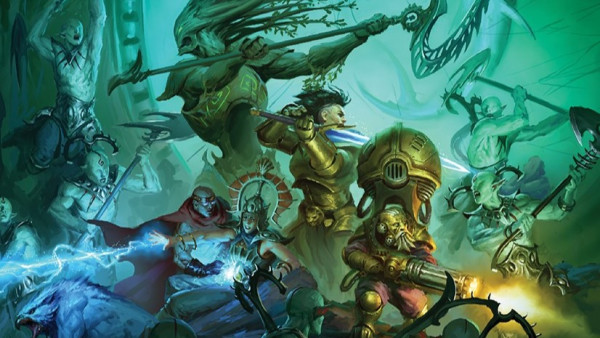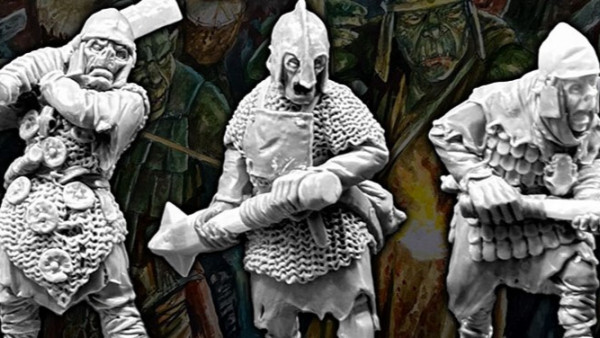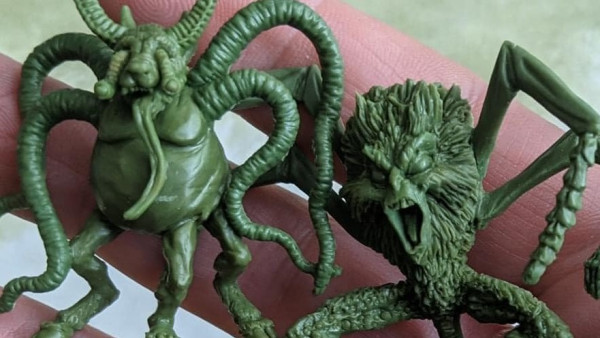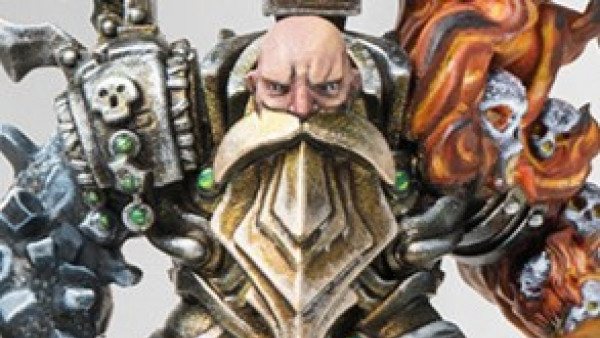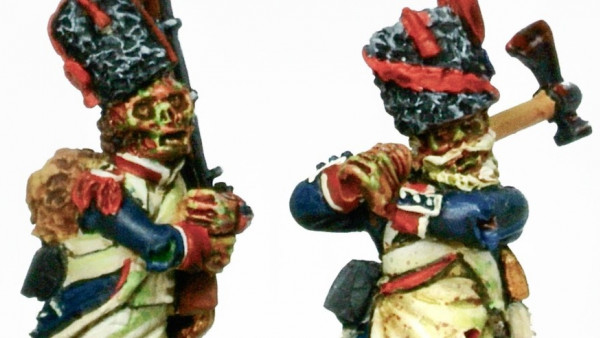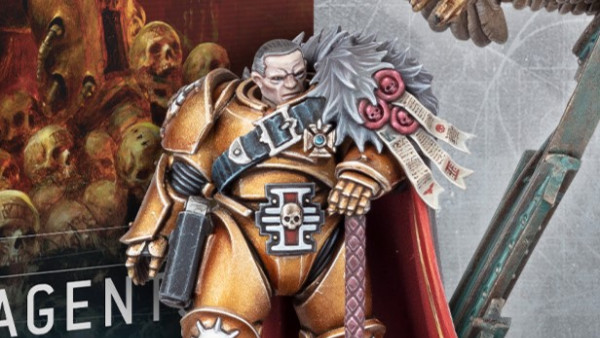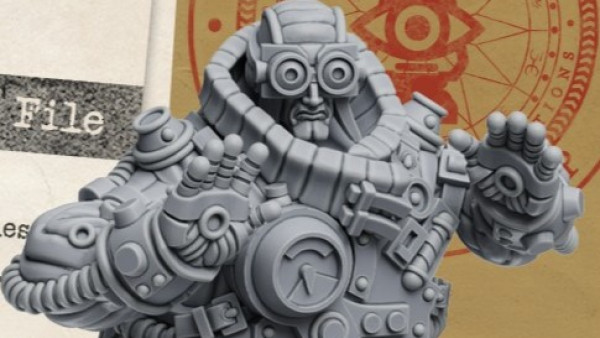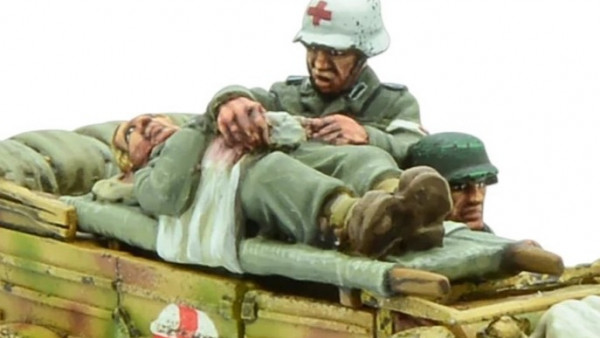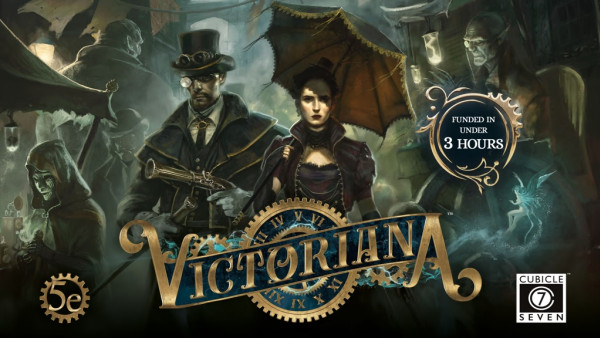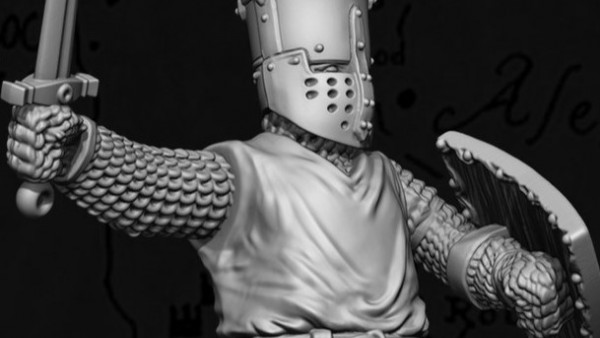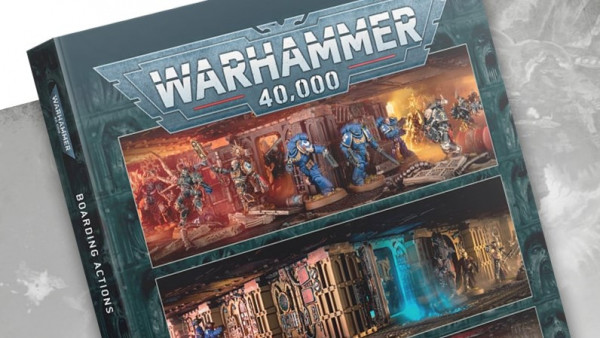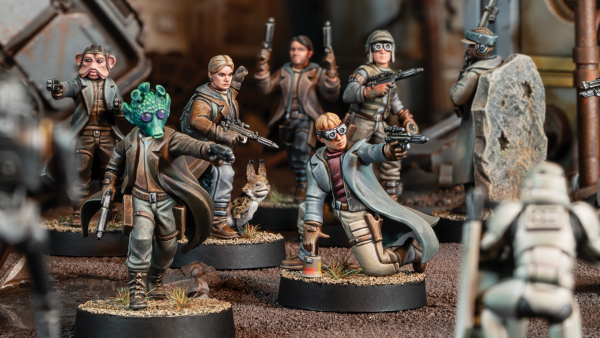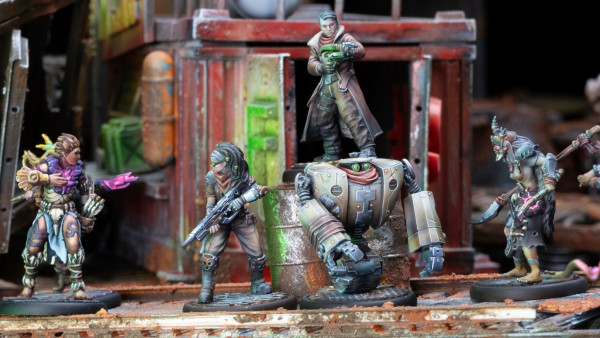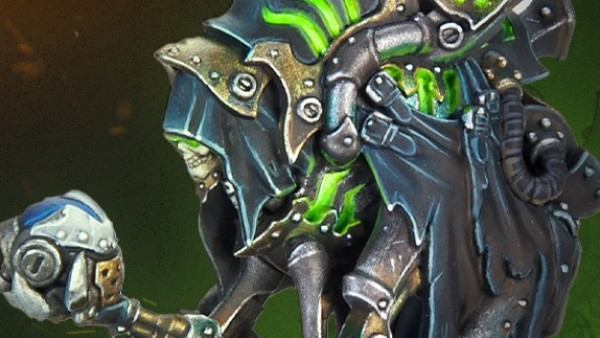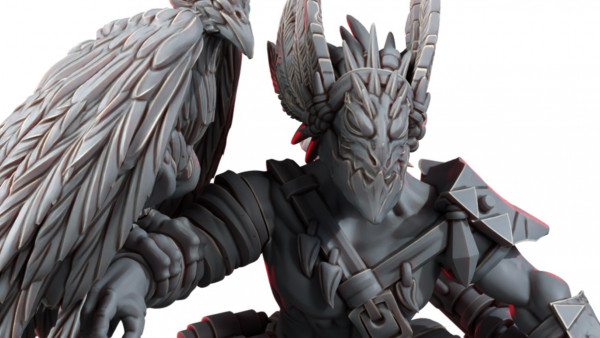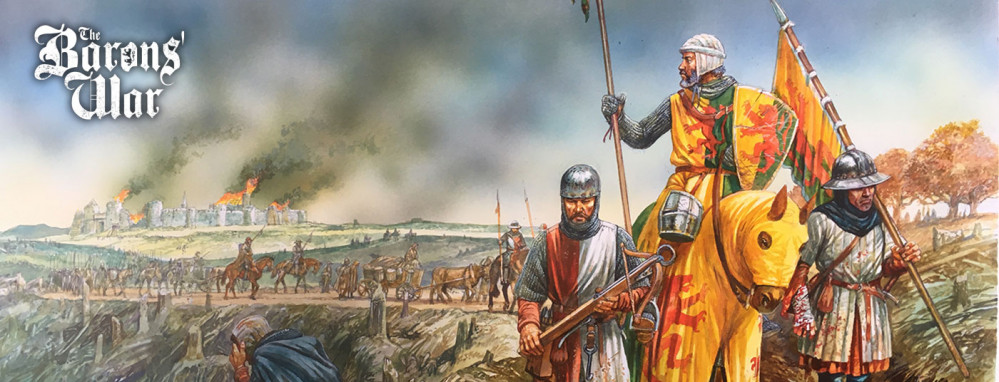
PanzerKaput Goes To Barons’ War
Recommendations: 11323
About the Project
Set against a backdrop of a Civil War that lasted for two years, 1215-17, as a result of the issuing of Magna Carta. A civil war was the perfect opportunity for the leading nobles of the time to grab land and power while settling some old scores along the way. This vying for land and power hadn't stopped since the invasion of 1066 with only the strongest of kings being able to keep their nobles in check. Our narrative focuses on small groups of warriors brought together under a lord or baron to raid and steal or defend land and property. With the strong, wise, cunning and lucky aiming to rise out of this civil strife in a better position than when it started. The Barons' War skirmish game has been written to enable players to fight out tabletop battles against the backdrop of the First Barons’ War between rival Barons or rival factions who find themselves on either side of the conflict. The game is historically themed, the gameplay is fast-paced and tactical with plenty of narrative and where force building presents you with lots of options enabling two players to muster very different retinues. However, as intended, this is an alpha set of rules which does not include rules for siege warfare, although rules for fighting in buildings are included. Campaign rules are something that will be addressed at a later date and released online. Having grown out of the Barons’ War Kickstarter project, the intention is for this ruleset to develop into a system that could be used throughout the Medieval period. Starting with England from when the Western Roman Empire withdrew around 410 AD to 1485 AD when Richard III died at the Battle of Bosworth Field. This presents us with a huge span of history for gaming which can be broadly divided into Romano-British, Anglo-Saxon and Viking, Anglo-Norman, Angevin and Plantagenet. And that’s just when looking at it from Great Britain. With warriors of this period being pretty similar, it would be easy to use the profiles in this rulebook to play out tabletop battles in any setting. Over time we see these rules evolving with additional warriors, characters, abilities and scenarios being added starting with the Dark Ages, the Anarchy and the Crusades and shared to www.warhost.online, which has been set up to be the community website for the game.
Related Game: The Barons' War
Related Company: Footsore Miniatures and Games
Related Genre: Historical
This Project is Active
Baron's war in Melton Bowbray
The Saucy Siege!
The first event to be held at Black Dragon Games in Melton Mowbray!
Please complete the form in the link attached to register your interest!
Places are limited to 12!
I am helping in printing the scenery for the 6 tables and I never thought that my office love of spreadsheets would help me in my hobby.
As I have a ton to print, more than I actually realised, I have created a spreadsheet to keep a track on all it is needed and what has been done.
Please someone tell me they do the same, lol.
I started a few days ago and have finished about 20% of what I need. and truthy I need it finished ay the end of April at the very latest but realistically end of March.
Christ I hope I don’t kill my printer and my love of 3d printing.
Ayyubid and Muslim flags
I have created some flags for my Muslim flags for Barons War, especially the Ayyubid faction, the forces of Salah al Din, Saladin. I thought there was little information on medieval shield design and a like but there is even less on the Islamic forces in the 12th and 13th century.
I have decided to go with what information I can find as it looks like the Muslim forces preferred plain single colour flags as opposed to multi coloured designs, this much later.
I have meaning worked on the Ayyubids and Fatimids flags as well as some generic, conjecture based flags.
The Tawheed flag, which is commonly used as a flag representing Islam.
An Islamic flag is the flag either representing an Islamic Caliphate or religious order, state, civil society, military force or other entity associated with Islam. Islamic flags have a distinct history due to the Islamic prescription on aniconism, making particular colours, inscriptions or symbols such as crescent-and-star popular choices. Since the time of the Islamic prophet Muhammad, flags with certain colours were associated with Islam according to the traditions. Since then, historical Caliphates, modern nation states, certain denominations as well as religious movements have adopted flags to symbolize their Islamic identity.
Early Islam
Before the advent of Islam, banners as tools for signaling had already been employed by the pre-Islamic Arab tribes and the Byzantines. Early Muslim army naturally deployed banners for the same purpose. Early Islamic flags, however, greatly simplified its design by using plain colour, due to the Islamic prescriptions on aniconism. According to the Islamic traditions, the Quraysh had a black banner and a white-and-black banner. It further states that Muhammad had a banner in white nicknamed “the Young Eagle” (Arabic: العقاب, al-ʿuqāb); and a flag in black, said to be made from his wife Aisha’s head-cloth. This larger flag was known as the “Banner of the Eagle” (Arabic: الراية العقاب, romanized: al-rāyat al-ʿuqāb), as well as the “Black Banner” (Arabic: الراية السوداء, romanized: al-rāyat as-sawdāʾ). In the Islamic tradition, Muhammad used the white flag to represent both the leader of the Muslim army and the Muslim state. Other examples are the prominent Arab military commander ‘Amr ibn al-‘As using a red banner, and the Khawarij rebels using a red banner as well. Banners of the early Muslim armies in general, however, employed a variety of colours, both singly and in combination.
The Umayyad Caliphate, which ruled the largest geographical extent of the medieval Islamic Empire adopted white flags. During the Abbasid Revolution, the Abbasids incorporated the Black Standard based on the early Islamic eschatological saying that “a people coming from the East with black banners” would herald the arrival of the messianic figure Mahdi. The Shiite Alids chose the colour of white to distinguish themselves from the Abbasids, but also adopted green flags. Thus in 817, when the Abbasid caliph al-Ma’mun adopted the Alid Ali al-Ridha a his heir apparent, he also changed the dynastic colour from black to green. The change was reverted when al-Ma’mun had Ali killed, and returned to Baghdad in 819. The Abbasids continued to use black as their dynastic colour. However, their caliphal banner was made of white silk with the Quranic inscriptions. The white colour was then adopted, in deliberate opposition to the Abbasids, by the Ismaili Shiite Fatimid Caliphate, and cemented the association of black and white with Sunni and Shia respectively. It was also used by the Almohads. The Fatimid caliphal banner was decorated in red and yellow, sometimes emblazoned with the picture of a lion. Early Muslim rulers are generally not known to have used emblems of a distinctly dynastic, religious, or personal nature.
Black standards are attributed to Muhammad and were used by the Abbasid Caliphate
The Umayyad Caliphate, Fatimid Caliphate and Almohad Caliphate used white standards. White flags are also attributed to Muhammad.
Green flags were sometimes used by Shi’ites.
The Kharjites used red standards
Middle Ages
The Ayyubids and Mamluks, succeeding the Fatimid caliphate, retained the association with yellow. The Ayyubid founder Saladin carried a yellow flag adorned with an eagle. Mamluk sultanic banners were yellow, but on occasion they used red banners. Mongol and Turkic dynasties to the east, including the Ilkhanate, Oghuz Turks and the Seljuq dynasty, preferred the white banner. Religious flags with inscriptions were in use in the medieval period, as shown in miniatures by 13th-century illustrator Yahya ibn Mahmud al-Wasiti. 14th-century illustrations of the History of the Tatars by Hayton of Corycus (1243) shows both Mongols and Seljuqs using a variety of war ensigns.
The crescent appears in flags attributed to Tunis from as early as the 14th century Book of Knowledge of All Kingdoms, long before Tunis fell under Ottoman rule in 1574. The Spanish Navy Museum in Madrid shows two Ottoman naval flags dated 1613; both are swallow-tailed, one green with a white crescent near the hoist, the other white with two red stripes near the edges of the flag and a red crescent near the hoist.
The hexagram was also a popular symbol among the Islamic flags. It is known in Arabic as Khātem Sulaymān (Seal of Solomon; خاتم سليمان) or Najmat Dāūd (Star of David; نجمة داوود). The “Seal of Solomon” may also be represented by a five-pointed star or pentagram. In the Qur’an, it is written that David and King Solomon (Arabic, Suliman or Sulayman) were prophets and kings, and are figures revered by Muslims. The Medieval pre-Ottoman Hanafi Anatolian beyliks of the Karamanids and Jandarids used the star on their flag.
The Mamluks served the Custodian of the Two Holy Mosques during their reign. During this time, they deployed what was believed to be the genuine relic of the Islamic prophet Muhammad’s banner. The banner was later captured by the Ottomans, who called the flag the “noble banner” (Sancak-ı Şerif) and used it during their military campaign. The flag was made of black wool, according to the Ottoman historian Silahdar Findiklili Mehmed Agha, but there is no further information available.
| Symbol | Image | History and usage |
|---|---|---|
| Crescent (Hilāl) | The crescent appears to have been adopted as an emblem on Islamic military flags from the medieval period, possibly in response to the Crusaders’ cross. The Red Crescent has been used as a replacement of the Red Cross as early as in the Russo-Turkish War of 1877 and was officially adopted in 1929. | |
| Star and crescent | The star and crescent moon was created in Islam by the Umayyads, even though it is commonly associated with the Ottoman Empire, and later came to commonly symbolize Islam, especially in the Western world before attaining more universally Muslim connotations. | |
| Allah | Means “God” in Arabic and used by Muslims worldwide irrespective of the language spoken. The word written in Islamic calligraphy is widely used as a symbol of Islam in the Muslim world. | |
| Shahadah | Parts of it are mentioned in the Quran separately, but never in its complete form. Used in hadiths and many historical Muslim and Islamist flags and emblems. | |
| Rub el Hizb | The Rub el Hizb (Islamic Star) is used to facilitate recitation of the Quran. The symbol is also found on a number of emblems and flags especially the state of Fez during the Marinid Sultanate. | |
| Khatim | Khatim symbol (Black Star) is known as the seal of Muhammad. | |
| Sujud Tilawa | Used in the Quran to indicate when the reader should perform sujud, the act of low bowing or prostration in worship of God. |
History
Early Islamic armies and caravans flew simple solid-coloured flags (generally black or white) for identification purposes, with the exception of the Young Eagle of Muḥammad, which had the shahada inscribed upon it. In later generations, the Muslim leaders continued to use a simple black, white, or green flag with no markings, writings, or symbolism on it.
The Umayyads fought under white and green banners. The Abbasids chose black (blue) and fought with black banners. The Fatimids used a green standard, as well as white. The Saudi Emirate of Diriyah used a white and green flag with the shahada emblazoned on it. Various countries in the Persian Gulf have red flags. The four Pan-Arab colours, white, black, green and red, dominate the flags of Arab states.
- Green – The silk and pillows of Jannah are believed to be green.
- White – Considered the purest and cleanest colour in Islam and the colour of the flag of Muḥammad, the Young Eagle.
- Black – The colour of Jahannam as well as the color of the Black Standard.
The Black Standard
The Black Standard is one of the flags flown by Muhammad in Muslim tradition. It was historically used by Abu Muslim in his uprising leading to the Abbasid Revolution in 747 and is also associated with the Abbasid Caliphate. It is also a symbol and is associated with Islamic eschatology (heralding the advent of the Mahdi).
The Star and Cresent
The crescent is usually associated with Islam and regarded as its symbol. The crescent and star had been used by royalty in the Sassanid Persian Empire, so it was adopted for similar uses by Umayyad Caliphate Muslims after the Rashidun Caliphate’s conquest of the region. However, the symbol only came into widespread use after it was associated with the Ottoman Empire, who took it from being the symbol of Constantinople after their takeover of the city. By extension from the use in Ottoman lands, it became a symbol also for Islam as a whole, as well as representative of western Orientalism. “Crescent and Star” was used as a metaphor for the rule of the Islamic empires (Ottoman and Persian) in the late 19th century in British literature. This association was apparently strengthened by the increasingly ubiquitous fashion of using the crescent and star symbol in the ornamentation of Ottoman mosques and minarets. By contrast, the majority of religious Islamic publications emphasize that the crescent is rejected “by some Muslim scholars”. The “Red Crescent” emblem was adopted by volunteers of the International Committee of the Red Cross (ICRC) as early as 1877 during the Russo-Turkish War; it was officially adopted in 1929.
Rub el Hizb
The Rub el Hizb is used to facilitate recitation of the Quran. The symbol determines every quarter of Hizb, while the Hizb is one half of a juz’. The symbol is also found on a number of emblems and flags, such as that of the Marinid Sultanate.
Khatim
Seal of the Prophets (Khatim) a title used in the Qur’an and by Muslims to designate Muhammad as the last of the prophets sent by God.
Shahadah
Shahadah is one of the Five Pillars of Islam and part of the Adhan. It reads: “I bear witness that none deserves worship except God, and I bear witness that Muhammad is the messenger of God.”
Religious flags with inscriptions were in use in the medieval period, as shown in miniatures by 13th-century illustrator Yahya ibn Mahmud al-Wasiti. 14th-century illustrations of the History of the Tatars by Hayton of Corycus (1243) shows both Mongols and Seljuqs using a variety of war ensigns.

Flags for Outremer Muslims and how I make the flag
First this is not a tutorial on how I create flags, that’s would be another one and if this is interest in such a thing I would consider doing one, or rather how I create flags, I am sure are better ways than the way I create them though. This is actually how I make the flags and add them to my figures.
So the first this is you do not need an amazing laser printer, I have an old inkjet that I use, its really about getting the setting right. So I use Matt Photo paper at 130gsm weight for my flags. This means I can fold the paper and it is not too think. I have used 180gsm paper and it is good but not gone any heavier but I would say try it and see as if it works for you, all the better. You can sandwich tin/aluminium foil between the sides of paper to make it stiffer, but again I have found you don’t need to but if you using normal printing paper in 80gsm I guess it would work, I have never used 80gsm for a while as the colours are not rich enough for me.
So I printed the flags on matt photo paper from a PNG image, this is really better for images, but instead of using the photo paper settings and best photo quality, I used the Matt Paper setting and Best Photo Quality. This just gives richer colour results, for me at least.
After printing the images I let them dry for a while, best use it at least half an hour, if not more, and them cut the flag out very carefully and as close to the flag as possible. I use a paper guillotine for this but there is no reason my you shouldn’t use scissors.
Once cut I fold the flag in half, gently, just to crease it so it can wrap around the flag pole easier. Then I turn the flag over so the white paper side is showing and the flag image is on the other side. This is because I want to colour the edges of the flag either black, or the dominate colour of the flag to hide the white and make it easier when hiding the white edges.
I use PVA or wood glue for this, please don’t use cheap school PVA as it is watery and can sink into the paper and ruin the image. This is another reason why I use thicker paper. I have a glue dispenser bottle with a thin precision cap to help get the glue only where you want it, there are fairly cheap on sites like Amazon. Now spread the glue on one side only and make sort it not in the centre part that wraps around the flag pole.
Now I gentle fold the flag and pinch the far edges together, taking care that the two corners align. Then I slowly moving back along the flag to where the flag pole will be, making sure the top and bottom edges align, but try and aim for no glue in the centre where the pole will be.
Now slowly slide the flag onto the pole and pinch the up to the poles shaft and then gentle remove the flag from it. Now we are going to make the folds in the flag and I prefer to this with the flag off the pole, but you can do this while it is attached, I just find it easier that’s all. I firstly put a gentle fold from the top corner closest to the pole. Then I put another fold in the flag in a sort of wavey manner. I find folding a thin paint brush handle is really good for this as it does put any creases in the paper.
Then I let the paper to dry and then attach it back to the flag pole.
All done
New retinue Builders for Outremer
I have now finished two more Retinue Builders this time for the forces of Outremer.
The first one is for The Outremer Crusader/Frank forces
Crusaders
The second is for The Outremer Forces of Islam
Forces of Islam
Ayyubid Forces for Baron's War Outremer
Its been a while since I picked up any paint brushes let alone painted for Barons War, been through a bit of a hobby slump since October last year, just peeing about with my 3d printer and playing games, so many games. Well I thought it was time to change that and I started to work on my Outremer project, in fact the Forces of Islam, The Ayyubid faction, Salah al Din’s boys them selves.
I started going through my Outremer Kickstarter, which had been left to one side, in the vain hope it will paint itself, no luck there, so I pulled the Muslims out and looks at the mounted troops and thought they will be nice to do.
So I gather them into small groups to paint, starting with the Horse Archers first, then the Faris, some Light Cavalry and ended with the Ghulams and the Sayyid and his command.
I have to admit I did have fear in painting these as they are some many colours and details of these little chaps, Paul Hick’s has done an amazing job on them, so I limited myself to 6 key colours with Teal being the main unifying colour to tie them all together.
I also hand painted all of the shields as the prays on them were all hand written and I thought that would be better achieved by hand painting, in true that do look good for it, but I could of used transfers and that would of been quicker, not sure if better.
So I have the whole painted force, which is about 700 points of screaming Muslims to kill all Christians and sweep them from the Holy Lands. I am very pleased with them and next will be the infantry.
I had to create the banner but that will be another post.
New Retinue Builder for the Welsh
I have created a new Retinue Builder for the Welsh for Barons War and have uploaded the other Retinue Builders too.
The Welsh Retinue Builder for the Barons War
The Barons War Retinue Builder
The Outlaw Retinue Builder
The Barons War Conquest Retinue Builder, Dark Ages
When did my hobby start to include spreadsheets, OMG, lol
Its been a While, But I am back with Retinue Creators
Warhost have a excel Retinue Creator on their webpage, Warhost, but it is limited to the first Baron’s War book and doesn’t cover the yet, I know there are plans afoot to do so, but, Warhost is not a huge company, in fact just three or so, and there is one chap working on the Retinue Builder and his has a full time job and life outside of this hobby, yeah I know, what’s this other life, lol.
Anyway, I decided that I need to create a Army Builder to help me out while I wait and started with recreating the wheel and make a Spreadsheet of the barons War book lists to get it to work. After this I developed a new spreadsheet for the lists in Death and Taxes as my new force I am building for this new is based of the Outlaw retinue of the Folville Gang, more to come on that over the next few months, So I have created another spreadsheet for the Death and Taxes Outland Retinues.
Now I have these done I am going to tackle the Welsh and the more complex Outremer lists, what a bloody fool and what is wrong with pen and paper?
I am no expect in excel and there is no fancy macros or formulas but I am sharing here with you guys to use.
The Building of Fort Gummy Bear, Part 3, the Last Part
Here are some pictures of Fort Gummy Bear, I actually mean the Outremer Hospital Fort for Barons’ War and I am jolly pleased with the results, especially as it was the first try I have printed anything and it has come at rather nicely. I have to give credit to Warhost and Footsore here as the files are a dream to work with and it is basically print and play.
Saying all that it has not been all plain sailing, most of the issues where caused by me, but I leant a lot while assembling it, what glue works, how to sure, should I remove the supports before or after curing, especially the large, flat pieces, the answer is after for large flat surfaces. But I have most of all enjoyed it.
What I loved the most was the painting of it as it really brought it to life and together and now it is to the next projects.
I hope in enjoy the pictures
New Video Building of Fort Gummy Near
Ladies and Gentlemen
I give you the second part to the 3 part video on the building of Fort Gummy Bear for my The Barons’ War: A Medieval Skirmish Games on my YouTube Channel Panzerkaput’s Painting School for Scoundrels
I hope you enjoy this video
#thebaronswar, #footsore, #fsinspired, #warhost, #historicalgamer, #geekvillain,
The Building of Fort Gummy Bear, Part 2
After printing it all the next stage is to make it less jelly sweet like and more stone like but had to decide what the stone should be like. In the end I decided on a sandy stone colour as the fort is mainly going to be used for my Outremer games of Barons’ war and so it made sense to go for the sandy colour of the arid region of the middle east.
I have to admit here that there is no amazing tricks of the trade in painting this as it is a lot of dry brushes and washes and nothing much more. So the stones.
Before anything I primed the whole fort using a black spray paint for quickness and ease and then zenith a white spray paint from above as a 45 degree (ish) angle. This is the basis for the drybrushing next. Look no magic or clever things.
So start is the main stone work I drybrushed Vallejo Model Colour Middlestone dry to use it that sandy/yellow colour. This was a very rough and heavy drybrush and I left patches of the prime showing to help give it that stoney look. Then I drybrushed the next level which was of Vallejo Model Colour German Pale Brown, the best beige colour, this time is a bit more control. After this came the final layer of Vallejo Model Colour Dark Sand.
The plastic work on the castle I painted using Vallejo Model Colour Yellow Ochre, a lovely colour as the base of the plaster. Then a drybrushed Vallejo Colour Dark sand as the midtone, so the rough plaster would stand out and if it got on the stones it wouldn’t show. The fainl light drybrush was in Vallejo Game Colour Elfic Flesh
Then I wanted a bit of detail, contrast to the sandy stone and on the band I wanted a reddy brown colour, like the Welsh and Byzantine castles. This was simply done by paint the band in Vallejo Game Colour Charred Brown and then roughly painted Vallejo Game Colour Terracotta and finally a drybrush of Vallejo Game Colour Tan.
The wooden areas where painted first Vallejo Model Colour German Grey and then I picked out the individual planks using the following colours Vallejo Game Colour Cark Fleshtone, Vallejo Game Colour Parasite Brown and Vallejo Game Colour Filthy Brown. Then I drybrushed all the wooden areas using Vallejo Game Colour Elfic Flesh, followed by a watery wash of Vallejo Model Colour German Grey. After this had dried I added another very light drybrush of Vallejo Game Colour Elfic Flesh.
The Building of Fort Gummy Bear, Part 1
I recently purchased a 3D Resin printer for the express propose of printing terrain, buildings and all those little bits and pieces to make the gaming table look good. There was a few good deals on around Prime Deal and I saw the Elegoo Mars 3 4K printer was going for a song. I rationalised the spending on it simply as I the Outremer Fort for Barons War and this would cost me about £200 and the cost of the printer was about this, so in my mind it made sense, buy the printer and print the fort and it ahs paid for itself. Okay, I missed the part about buying resin, lol.
So sending about £50 on resin, still paid for itself in the end.
This was the first time with a 3D printer and I have always been a bit intimidated by them, hearing so many stories about you need to dial in this, be aware of that, its chemicals and it will kill you if you are not careful, etc, etc. Actually it wasn’t as bad as all that. Being a resin printer, it is a plug and print experience and I am a total noob but I managed to get the hang of it. Okay it is not fully dialled in but the results are rather good.
I have to say the files for the Outremer fort where set up for a resin printer and the perfect for the build plate size too. This was my start project using the resin and decided to print the round tower first. So I hit print and off we went. So once I have finished the printing my wife put a tealight in it and turned it into a lamp, go figure.
Once I finished printing the tower I when around the fort printing each part in turn.
I made some mistakes on the way, learnt so lessons, biggest one is don’t remove the supports before it dries, especially on large flat areas, learnt how to correct them, a hairdryer to heat up the resin, straighten it and then a heavy object to keep it flat while cooling down.
Gluing it together was a pain, but after a while but I found that but contact adhesive and super glue worked, with super glue you have to wait to it goes a little tacky and bind, vice, generally hold together until set.
Also plan when building and printer these big beasts. It is amazing the amount of help and support I got from fellow hobbyists. This is a big beast, maybe a little too big for my first project but I am glad I did it. It was straight forward and once done looked amazing and I felt so good done it.
I know there is a question that everyone asks, why the red resin? This simple answer is that it was the cheapest water washable resin available, so used that. I figured it is going to be primed and painted so the actual colour makes no real difference. Thus Fort Gummy Bear was born.
Next part is the painting of the beast.
New Video to my YouTube Channel
I have updated a new video to my YouTube Channel PanzerKaput’s Painting School for Scoundrels
This one is on my first Baron’s War Tourney at Britcon last weekend.
Hope you like the video.
#thebaronswar, #fsinspired, #warhost, #britcon, #footsore, #outremer,
Britcon and my First Tourament
Here are some photos of my games at The Barons’ War: A Medieval Skirmish Game tournament from last weekend at Britcon. First I would like to Bartosz Nowicki for being a massive gent and organising the show, demoing games while we played and for all the hard work he put in to create this and make the best special.
I would also like to thank all the guys for playing or just popping by to say hi and see the the games as you guys also made it as you are the best playing guys.
Also Mark Farr and Footsore for support the event and without you guys there would be no Barons War.
So what can I say about my event and first tournament for a day and a age. Well the first game went so well right up to the moment a unit of sergeants ran away a long with the rest of my army but my glorious green bowmen stayed after ranking up the most kills of my retinue.
The second game was edgy, no one wanted the middle ground and bowmen and crossbowmen covered it, when to flank my opponent, blunted both attacks and took the objective. Again my green bowmen stayed the course and did the most kills again, Noticing a theme?
Last game, had to stop the attack from burning down the village, let say that went well, set firs to four building, failed to put out any, my Baron changed his green levy with spears and came off worst, Then they got shot up and ran away. But wish who needn’t run away, and who killed the most? Anyone? Yes indeed it was my green bowmen. I think I should just have an army of green troops.
Well I lost all three games, got the least points, and won the wooden spoon. I also won the best painted retinue, which was very nice and proved I am style over content, oh what a dedicated follower of fashion, lol.
Well done Nick Dunning for winning, for Kieran Kirkham for Most Sporting Chap and Benedict Coffin for the best retinue background story.
Here are a few photos of the day
#thebaronswar #fsinspired #warhost #britcon #footsore #outremer
2 Days
2 days to Britcon and The Barons’ War: A Medieval Skirmish Game Tourney 😀
Barons' War at Britcon, 12th August
At Britcon 2023 Bartosz Nowicki, leading community member, in conjunction with Footsore Miniatures & Games and Warhost, are delighted to be hosting our first ever events for Footsore Miniatures’ Barons War ruleset, with a one-day events themed for Barons War and Outremer on the 12th August.
Are you going?
So are you going and beat me at The Barons’ War: A Medieval Skirmish Game come along.
For further details
http://www.bhgs.org.uk/britcon–barons-war.html
#thebaronswar #footsore #warhost #britcon
Barons' War Tourney at Britcon, 12th August
At Britcon 2023 Bartosz Nowicki, leading community member, in conjunction with Footsore Miniatures & Games and Warhost, are delighted to be hosting our first ever events for Footsore Miniatures’ Barons War ruleset, with two parallel one-day events themed for Barons War and also Outremer on the 12th August.
Are you going?
So are you going and beat me at The Barons’ War: A Medieval Skirmish Game come along.
For further details
http://www.bhgs.org.uk/britcon–barons-war.html
#thebaronswar #footsore #warhost #britcon
Barons' War at Britcon, 12th August
At Britcon 2023 Bartosz Nowicki, leading Barons’ War community member, in conjunction with Footsore Miniatures & Games and Warhost, are delighted to be hosting our first ever events for Footsore Miniatures’ Barons War ruleset, with two parallel one-day events themed for Barons War and also Outremer on the 12th August.
Are you going?
So are you going and beat me at The Barons’ War: A Medieval Skirmish Game come along.
For further details
Barons' War at Britcon, 12th August
At Britcon 2023 we are delighted to be hosting our first ever events for Footsore Miniatures’ Barons War ruleset, with two parallel one-day events themed for Barons War and also Outremer on the 12th August.
So are you going and beat me at The Barons’ War: A Medieval Skirmish Game come along.
For further details
Early Medieval Irish
I have finished all my Dark Age (Early Medieval) Irish from Wargames Atlantic and I am very impressed with them. Nice sculpts, variety of poses and lots of options. I am planning on using them for my Barons’ War Welsh and also as Irish once the list comes out.
#thebaronswar #wargamesatlantic
Sir John Folville
This is Sir john Folville, the leader of the Folville Gang from the Charnwood forester area of Leicestershire. He is the leader of the outlaw force for my Barons’ War Games.
I actually have based he on a real historical fellow. Sir John Folville was an member of parliament (MP) for Rutland and Leicestershire and father of Eustace Folville, the leader of the Folville Gang. The leader of the Folville gang was the issue of Sir Eustace (who died shortly before 1284) by Dame Alice.
The Folvilles had their seat at Ashby Folville, Leicestershire since at least 1137 when its lordship was held by Fulk de Folville. The family name, ultimately derived from Folleville in the French region of Picardy, is attached to several other sites in Leicestershire, such as the deserted village of Newbolt Folville.
The family seems to have gained most their estate at the beginning of the 12th century. Several of their possessions, such as Ashby and the manor at Teigh, were in the hands of other parties at the time of the Domesday survey, but had passed to the Folvilles by the reign of Stephen (1135–1154). The family were well-established in Leicestershire by the mid 13th-century. In 1240 a member of the family donated a large sum to the church at Cranoe.
The Folvilles were rebels during both Barons Wars; Sir William Folville (d. c. 1240) had his lands seized for his part in the First Barons’ War in 1216 and Sir Eustace Folville (murdered in 1274) was one of the knights appointed to enforce the Provisions of Oxford in 1258 and stoutly defended Kenilworth Castle after the Battle of Evesham in 1265.
This is possible one of the basis of the Robin Hood stories.
#thebaronswar, #fsinspired, #footsore,































